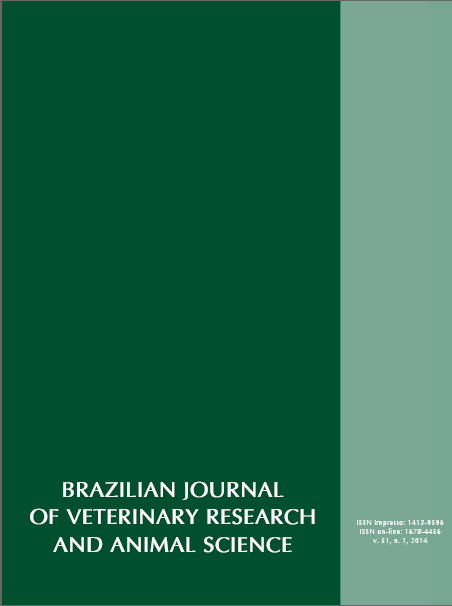Use of PCR for detection of milk naturally infected with bacilli of bovine tuberculosis
DOI:
https://doi.org/10.11606/issn.1678-4456.v51i1p42-48Keywords:
bovine tuberculosis, molecular diagnosis, Mycobacterium tuberculosis complex, milk.Abstract
The causative agent of bovine tuberculosis (BTB) is Mycobacterium bovis, a bacteria belonging to M. tuberculosis complex (MTC). The definitive diagnosis is realized by isolation and identification of the M. bovis from clinical samples, using a combination of traditional culture and biochemical methods, which is considered the “gold standard”. This procedure is cumbersome and time-consuming. We evaluated a PCR assay for the direct detection of MTC DNA in naturally contaminated milk, using primers that were previously tested and proven reliable to target the IS6110 element. Milk previously seeded with M. bovis was used as the starting material, for padronization of the technique. The procedure involved extracting the DNA by enzymatic lysis (proteinase K and lysozyme), phenol, chloroform, isoamyl alcohol, followed by ethanol precipitation and PCR. The PCR assay allowed us to detect BTB in artificially contaminated milk, with a detection limit of 100 CFU/mL, and was also able to detect the bacillus in 50% (75/150) of samples from naturally infected animals. This procedure could be used to assist the in vivo diagnosis for BTB, complementing the sorological or microbiological tests and becomes an alternative option for implementation in epidemiological studies of BTB transmission and to prevent contaminated milk from entering the food supply.
Downloads
Downloads
Published
Issue
Section
License
The journal content is authorized under the Creative Commons BY-NC-SA license (summary of the license: https://





